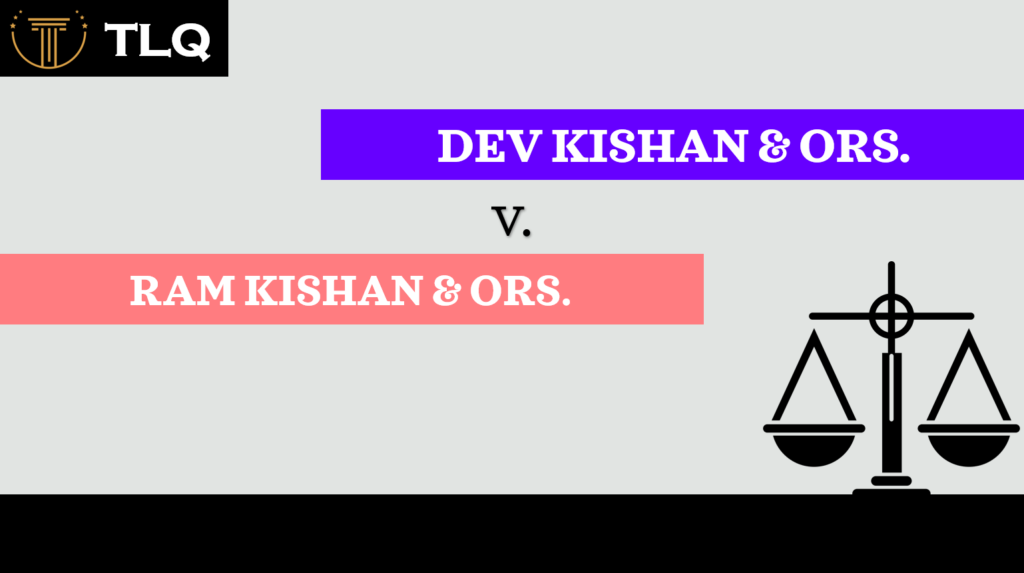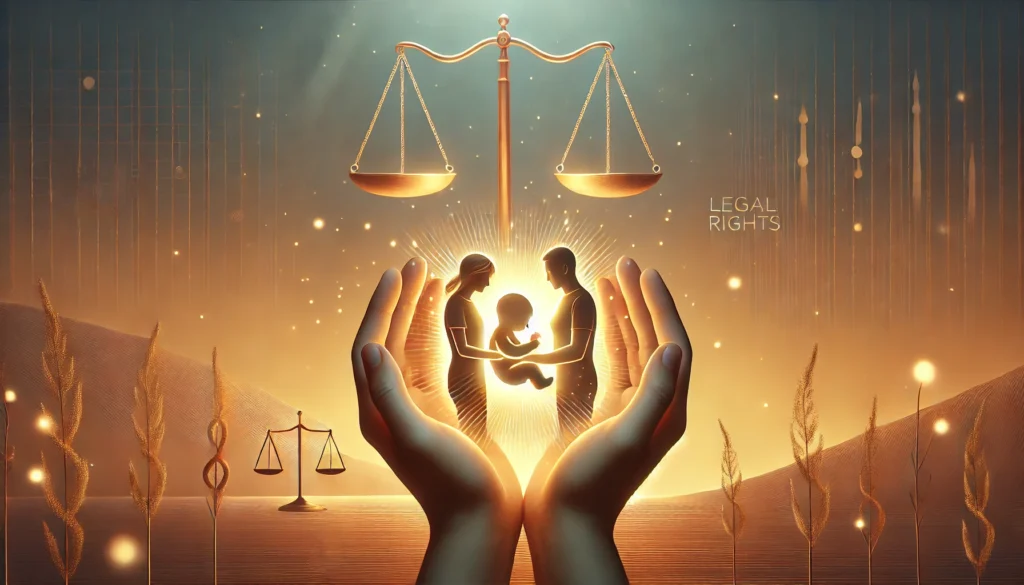Publication On: 2nd September, 2024
INTRODUCTION:
Dowry, the practice of transferring parental property, gifts, or money at the marriage of a daughter, has long been a part of Indian culture. Despite its deep historical roots, dowry has evolved into a significant social evil, causing immense harm to many families and individuals. The tradition often leads to severe issues such as domestic violence, financial strain, and even fatalities, particularly affecting women. It perpetuates gender inequality and reinforces the notion of women as financial burdens. Despite being illegal, the dowry system continues to be a widespread social issue in India, to combat this deep-rooted practice, the Indian government has enacted several legal measures, including the Dowry Prohibition Act of 1961, which criminalizes the giving and taking of dowry.
However, the effectiveness of these laws remains questionable due to several challenges in enforcement and persistent societal norms that continue to support the practice. Law enforcement agencies often face difficulties in investigating and prosecuting dowry-related cases, partly due to the lack of evidence and partly because of the reluctance of victims and their families to come forward. Moreover, societal attitudes that view dowry as a customary and essential part of marriage need significant change to truly eradicate the practice.
MEANING AND LEGAL PARLANCE OF DOWRY:
In a general sense, Dowry refers to some form of financial or material gift given to either wives or husbands as part of marriage. This practice has been observed worldwide, from Europe to Africa to Asia. In Europe, dowries have changed multiple times regarding whether the bride’s or the groom’s family paid the other. During the height of the dowry system in the Middle Ages, the bride’s family paid a dowry to the groom, leading to various social changes in Europe. In many Islamic cultures, the groom provides the wife with a Maher (dowry) as part of the wedding ceremony. In Various African Cultures, the groom gives the wife a dowry, which can take various forms as a sign of respect.
However as per Indian laws; Section 2 in The Dowry Prohibition Act, 1961
reads as under:
“2. Definition of ‘dowry’. —In this Act, ‘dowry’ means any property or valuable security given or agreed to be given either directly or indirectly—
(a) by one party to a marriage to the other party to the marriage; or
(b) by the parents of either party to a marriage or by any other person, to either party to the marriage or to any other person,
at or before or any time after the marriage in connection with the marriage of the said parties, but does not include dower or mahr in the case of persons to whom the Muslim personal law (Shariat) applies.”
Based on the aforementioned definition of “dowry,” any property or valuable item given or promised, whether directly or indirectly, before, during, or after the marriage and in relation to it, qualifies. Hence, there must be a clear link between the exchange of property or valuable items and the marriage itself for it to be considered dowry.
ORIGIN OF DOWRY AS A SOCIAL EVIL:
India is often portrayed as a very backward society when it comes to women’s rights. Feminists always criticize Hindu traditions, labelling them as Brahminical and patriarchal. We are portrayed as a society where women suffer due to age-old dogmas, which lead to dowry murders and female fertility treatment. But is dowry really a social evil custom with its origin in ancient india , Almost every major civilisation except India has a history of dowry. The Aryans and Magasthenes who lived around 300 BCE. On their arrival in India in the 1st century BCE, it became clear that the dowry system was completely non-existent. Al-Biruni observed the same. Contrary to what colonial historians have told us, dowry was never an Indian custom. It was brought to India by the British in the late 19th century. The British colonial rule in India brought further complexities to the dowry system. British historians and policymakers, driven by their “Civilizing Mission,” condemned many Indian customs, particularly those affecting women. Influential British writers criticized Indian society for its treatment of women, with James Mill, in his book “History of British India,” arguing that women’s status was an indicator of societal advancement.
But in reality The British policies also had mixed impacts; while they introduced laws against practices like sati and promoted women’s education, they also implemented economic policies that inadvertently increased dowry demands. In the 19th century, India underwent a significant transformation, rediscovering its cultural heritage and developing a newfound self-awareness. This period of reformation and renaissance marked a return to the principles that defined its ancient glory. Dowry, a practice rooted in tradition as a voluntary gift known as stridhan, evolved into a significant social evil during this time. Initially intended as a token of love, dowry became a mandatory and often burdensome requirement for marriage, leading to severe social issues such as financial strain, domestic violence, and female infanticide. While the British “civilized” us, dowry was still a common practice in England. In ancient Indian society, dowry was not perceived as a social evil, but rather as a cultural custom rooted in traditions such as Stridhan, where women received wealth from their mothers. The practice enhanced the status of women by guaranteeing them economic security and autonomy. However, during the British colonial rule in the late 19th century, a major change occurred in the perception and practice of dowry in India.
Because the rural lands were not tradable and a women had all exclusive rights , British colonial policies introduced laws that changed inheritance patterns, favoring male heirs and restricting women’s property rights. The British passed laws that made property rights trustees and only men could inherit. In the absence of male heirs, the Raj confiscated land. This law made male descendants mandatory. This change required families to accumulate wealth in the form of dowries to ensure the economic security of their daughters at marriage, since inheritance property rights were reserved only for male descendants. Thus, under British influence, a cultural tradition aimed at the economic empowerment of women was transformed into a mandatory custom tied to marriage arrangement. Prominent among various social reform movements were the Singh Sabha and Arya Samaj. The Singh Sabha, established in Punjab in 1873, aimed to reform Sikh society by eliminating superstitions, unnecessary rituals, and social abuses. It emphasized the importance of women’s education and worked against dowry, child marriage, and female infanticide. The Singh Sabha advocated for simple and less expensive marriage ceremonies, promoting equality of sexes and opposing extravagant wedding expenditures that contributed to the dowry burden. They also supported widow remarriage and established educational institutions to empower women.
The Arya Samaj, founded by Swami Dayanand Saraswati in 1875, was another significant reform movement. It aimed to reinterpret Hinduism and address social evils through the lens of Vedic principles. Swami Dayanand opposed dowry, child marriage, and female infanticide, advocating for women’s education and equal rights. The Arya Samaj emphasized Vedic marriage rituals, which were simpler and less expensive than traditional Hindu ceremonies, to alleviate the financial burden on families. The movement also promoted widow remarriage and established schools for girls, emphasizing the importance of education in uplifting women’s status. These reform movements faced numerous challenges. The deeply ingrained cultural practices and societal norms made it difficult to eradicate dowry and related evils entirely. Despite these challenges, the efforts of the Singh Sabha and Arya Samaj brought significant changes. They raised awareness about the detrimental effects of dowry and other social evils, encouraging communities to adopt progressive attitudes towards women’s rights and education. English education played a crucial role in this transformation, enabling women to gain awareness of their rights and participate actively in social reforms.By the early 20th century, the impact of these movements was evident. Women’s literacy rates improved, and there was a growing recognition of the need for gender equality. The reformers’ advocacy for simple marriage ceremonies and women’s education laid the groundwork for future legal and social reforms.
EVOLUTION OF LAWS AGAINST DOWRY:
The movement Against Dowry has evolved significantly after a period of stagnation immediately after independence, amid growing dissatisfaction with the unfulfilled promises of justice and equality for women in independent India , the movement gained momentum in the 1970s . One of the most pressing issues that arose during this period was the persistence of the practice of dowry, despite the passage of the Dowry Prohibition Act in 1961. Dowry remained a widespread social norm, often implicit if not explicitly demanded. This placed an unfair economic burden on the bride’s family and exposed women to various forms of exploitation, harassment and violence if dowry expectations were not met.
In the mid-1970s, anti-dowry protests began to gain momentum across India. For example, in Hyderabad, the Progressive Women’s Organisation led demonstrations in 1975, which were the first signs of questioning the legality and validity of the dowry system. The Shahada Movement of 1972 also championed a broader feminist agenda calling for the abolition of dowry practices and other forms of gender discrimination. However, the anti-dowry movement reached a critical turning point in Delhi around 1977. Here, there were growing calls not only for the abolition of dowry but also for legal action against dowry-related crimes, such as murders and suicides due to dowry disputes. During this period, widespread protests and demonstrations occurred in states such as Punjab, Maharashtra, Karnataka, Gujarat, Madhya Pradesh and Bengal, reflecting the national scale and urgency of the problem.
In Delhi, several organisations played pivotal roles in garnering public outrage and organising protests against dowry-related injustices. The Mahila Dakshata Samiti and the Stree Sangharsh emerged as prominent voices in upholding women’s rights and challenging social norms that perpetuate gender-based violence and discrimination. The tragic death of Turbinder Kaur, who was allegedly murdered by her parents-in-law in a dispute over dowry in 1979, became the focus of nationwide outrage and triggered massive protests organised by the Stree Sangharsh and supported by various student organisations. These protests received widespread media coverage and brought to light the systemic injustices faced by women in relation to dowry. Feminist critique of dowry went beyond its direct impact on individual women to encompass broader social and economic dimensions. Activists argued that dowry reinforced patriarchal structures as it treated women like commodities whose value was determined by their ability to bring wealth to the marriage household. This commercialization of women not only perpetuated gender inequality but also contributed to economic inequality within families as daughters were often seen as an economic burden to marry off for a dowry.
Furthermore, feminists stressed that dowry was linked to other forms of oppression such as caste discrimination and economic exploitation. Women from marginalized communities are particularly vulnerable as they are often asked for high dowries and are at higher risk of violence if their demands are not met. The feminist movement therefore advocated an intersectional approach that addressed the various aspects of women’s oppression in Indian society. The feminist struggle against dowry in India was significantly shaped by legal reforms aimed at protecting women and addressing the severity of dowry-related crimes. Central to this effort was the amendment to the Indian Penal Code (IPC) in 1983, which specifically recognized dowry-related deaths as a distinct offense with stringent penalties. This legal change marked a pivotal victory, highlighting the state’s responsibility to combat dowry-related violence and safeguard women’s rights.
However, despite these legislative gains, challenges persisted in implementing and enforcing laws against dowry. Issues such as police indifference, judicial delays, and societal attitudes that normalized dowry practices continued to hinder justice for victims. Women’s organizations advocated for improved training of law enforcement officials, sensitization of judicial authorities, and public education campaigns to shift cultural attitudes towards dowry and gender-based violence.
The legal landscape saw further developments aimed at strengthening protections against dowry-related offenses. The introduction of Section 498A to the IPC under the Criminal Law (Second Amendment) Act of December 1983 made cruelty towards women, encompassing physical and mental harassment linked to dowry, a non-bailable offense punishable by imprisonment and fines. Amendments to the Indian Evidence Act, including Section 113A, facilitated prosecution in cases of abetment to suicide due to dowry harassment. Additionally, amendments to Section 174 of the Criminal Procedure Code (CrPC) mandated post-mortem examinations for women who died within seven years of marriage under suspicious circumstances, enhancing the legal framework for investigating dowry-related deaths. Regional initiatives, such as Haryana’s mandate to register unnatural deaths of married women within seven years as murder or abetment to suicide, reflected localized efforts to combat dowry-related violence effectively.
DOWRY PROHIBITION ACT 1961:
The Dowry Prohibition Act, 1961 is an important Indian law that came into force on 1 May 1961 and aims to eradicate the practice of dowry by explicitly prohibiting the exchange of dowry. As defined in Section 2 of the Act, dowry includes any property or valuable security given or agreed to be given, directly or indirectly, in connection with a marriage. The Act was initially criticised for its limited impact but has been significantly amended over time.
Section 3 clarified that certain marriage gifts to the groom or bride were permissible while maintaining strict requirements for documentation of these transactions. The Act provides for stringent punishment for various dowry-related offences. Under Section 3, a person found guilty of giving or receiving dowry may be punished with imprisonment for a term which may extend to five years and with a fine which may extend to around 15,000 rupees. The amount of dowry, whichever is higher, is to be blamed. Section 4 deals with the offence of dowry demand and provides for imprisonment of six months to two years and a fine extending to Rs 10,000.
Further, Section 4-A of the Act specifically prohibits advertisements offering dowry and provides for imprisonment of six months to five years and/or a fine not exceeding Rs 15,000. These legal provisions provide a robust framework for protecting women from dowry-related abuse and are complemented by the Protection of Women from Domestic Violence Act, 2005, which provides further protection from domestic violence resulting from dowry demands.
Public Prosecutor, High Court Of A.P, Hyd. v. Nese Jilakara Sreeramulu (AIR 2003 SCC Online AP 830), This judgment discusses the importance and intendment of the Dowry Prohibition Act, emphasizing the aim to curb the practice of giving and taking dowry in any form.
DOWRY AND INDIAN PENAL CODE, 1860:
Section 304B in The Indian Penal Code, 1860 defines “dowry death” (SECTION 80 OF THE BHARATIYA NYAYA SANHITA,2023) as the death of a woman within seven years of marriage when it is proved that she suffered burns, bodily injuries or under extraordinary circumstances, cruelty or harassment by her husband in connection with the demand for dowry or the exposure of her relatives. A person convicted of the offence of dowry death is punishable with imprisonment of at least seven years, which may be extended to life imprisonment in some cases. The Supreme Court in the case of Vemuri Venkateswara Rao And Another (Accused A-1 And A-2) v. State Of Andhra Pradesh (1991 SCC ONLINE AP 320) laid down guidelines for proving this offence: proof of demand for dowry, harassment and unnatural death within seven years of marriage, thereby establishing the offence under Section 304 (B). In Satbir Singh And Ors vs State Of Haryana on 14 September, 2005 (AIR 2005 Supreme Court 3546) , the court observed that , some customary payments in connection with birth of a child or other ceremonies are prevalent in different societies, such payments are not enveloped within the ambit of “Dowry”. Only such property which is given or agreed to be given held that once the prosecution proves the prerequisites of dowry death, the responsibility shifts to the defence to demonstrate the accused’s innocence.
Section 498A in The Indian Penal Code, 1860 (SECTION 85 R.W. SECTION 86 OF THE BHARATIYA NYAYA SANHITA, 2023) deals with cruelty to a woman by her husband or his relatives, which is punishable with imprisonment of up to three years and fine. Cruelty here refers to deliberate acts designed to drive a woman to suicide or cause her grievous physical or mental harm. It also includes harassment with a view to forcing her or her relatives to comply with unlawful demands for property or valuable security or to fail to comply with such demands. These legal provisions are aimed at protecting women from dowry-related harassment and other forms of cruelty in marital relationships.
S.V Ramamurthy Petitioner v. The Secretary To Government Of Tamil Nadu Home Department, Fort. St. George, Chennai 600 009 (2006 SCC ONLINE MAD 447)
, This case highlights the amendments made to combat dowry-related issues, including the introduction of Section 498-A in the Penal Code to address cruelty towards women.
In the case, State Of Punjab vs Iqbal Singh And Ors on 10 May, 1991 (AIR 1991 Supreme Court 1532) , The Supreme Court clarified that the legislature set the period of seven years, based on the assumption that by this time, the couple would have established stability in their lives.
DOWRY AND INDIAN EVIDENCE ACT, 1872:
Section 113 in The Indian Evidence Act, 1872 , (SECTION 118 OF THE BHARATIYA SAKSHYA ADHINIYAM, 2023) deals with the presumption of dowry death. If a woman dies in connection with a demand for dowry and it is shown that she was subjected to harassment or cruelty by someone soon before her death, the court will presume that this person is responsible for her death.
The import of the expression “soon before her death” was examined by the Hon’ble Apex Court in the case of Kaliyaperumal And Anr vs State Of Tamil Nadu on 27 August, 2003, (AIR 2003 SC 3828) and the Apex Court in the aforesaid judgement has observed as hereunder:-
“With the concept of proximity text, the phrase “soon before her death” that appears in substantive Section 304B IPC and Section 113 of the Evidence Act is present. There’s no specific time frame given, and the phrase “soon before her death” isn’t explained. The length of time that falls inside the definition of “soon before” is up to the courts to decide, taking into account the particular facts and circumstances of each case. It is sufficient to say, however, that the phrase “soon before” generally implies that there shouldn’t be much of a gap between the alleged cruelty or harassment and the death in question.
There must existence of a proximate and live-link between the effect of cruelty based on dowry demand and the concerned death. If alleged incident of cruelty is remote in time and become stale enough not to disturb mental equilibrium of the woman concerned, it would be of no consequence.”
DOWRY AND DYING DECLARATION:
In dowry death cases, dying declarations (statements made by the dying person about the circumstances leading to his death) play an important role in the legal proceedings. Section 32(1) of the Indian Evidence Act, 1872 allows such statements to be admitted in evidence. These statements can be recorded by anyone, but those recorded by a magistrate are considered to be the most reliable. The Supreme Court has emphasised that while there are no specific rules governing who can record dying declarations, a magistrate’s recording has the highest probative value. The person making the recording should be satisfied that the person making the statement is conscious and of sound mind. The statement should focus only on the cause of death and exclude irrelevant details to maintain credibility.
In Bairon Singh vs State Of M.P on 29 May, 2009 (AIR 2009 Supreme Court 2603) , A woman’s body was found in a well in a village. The cause of death was asphyxiation due to drowning. She had been married to the defendant for about ten years before her death. The trial court initially ruled that the death was accidental. The acceptance of her dying declaration did not fall under Sections 113-A and 113-B of the Indian Evidence Act and the defendant was acquitted under Sections 304-B and 306 of the Indian Evidence Act. However, the court later found the accused guilty under Section 498-A IPC and Section 3 of the Dowry Prohibition Act, 1961 and sentenced him to three years imprisonment and a fine of Rs 15,000. The Supreme Court then set aside the verdict and convicted the accused under Section 498-A IPC based on the statement of the deceased’s brother, who said that the accused had demanded a job and a dowry of Rs 10 lakh, had beaten the deceased and forced a cloth in her mouth.
CONCLUSION:
The Dowry Prohibition Act of 1961 criminalizes the giving and receiving of dowry in India, aiming to curb its adverse impact on women. Despite legal provisions, enforcement challenges remain, including evidence collection and social norms that perpetuate the expectation of dowry. Amendments such as Section 498A of the Indian Penal Code further penalize dowry-related atrocities and highlight legal protections against harassment and violence. However, effective implementation requires sensitization of law enforcement agencies and increased awareness among the public. Strengthening these legal frameworks is crucial to combat dowry practices, protect women’s rights, and promote gender equality in marital relationships.




